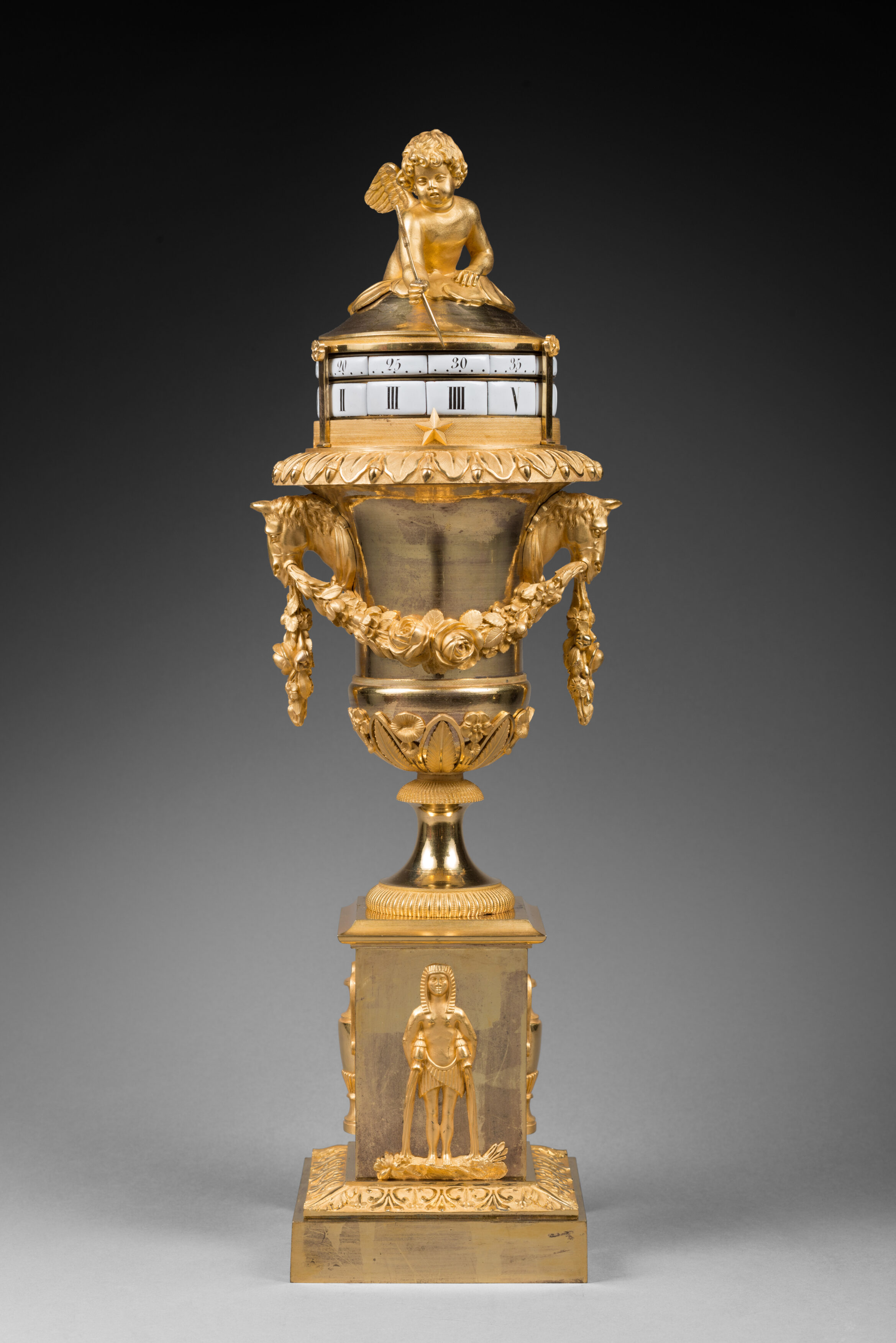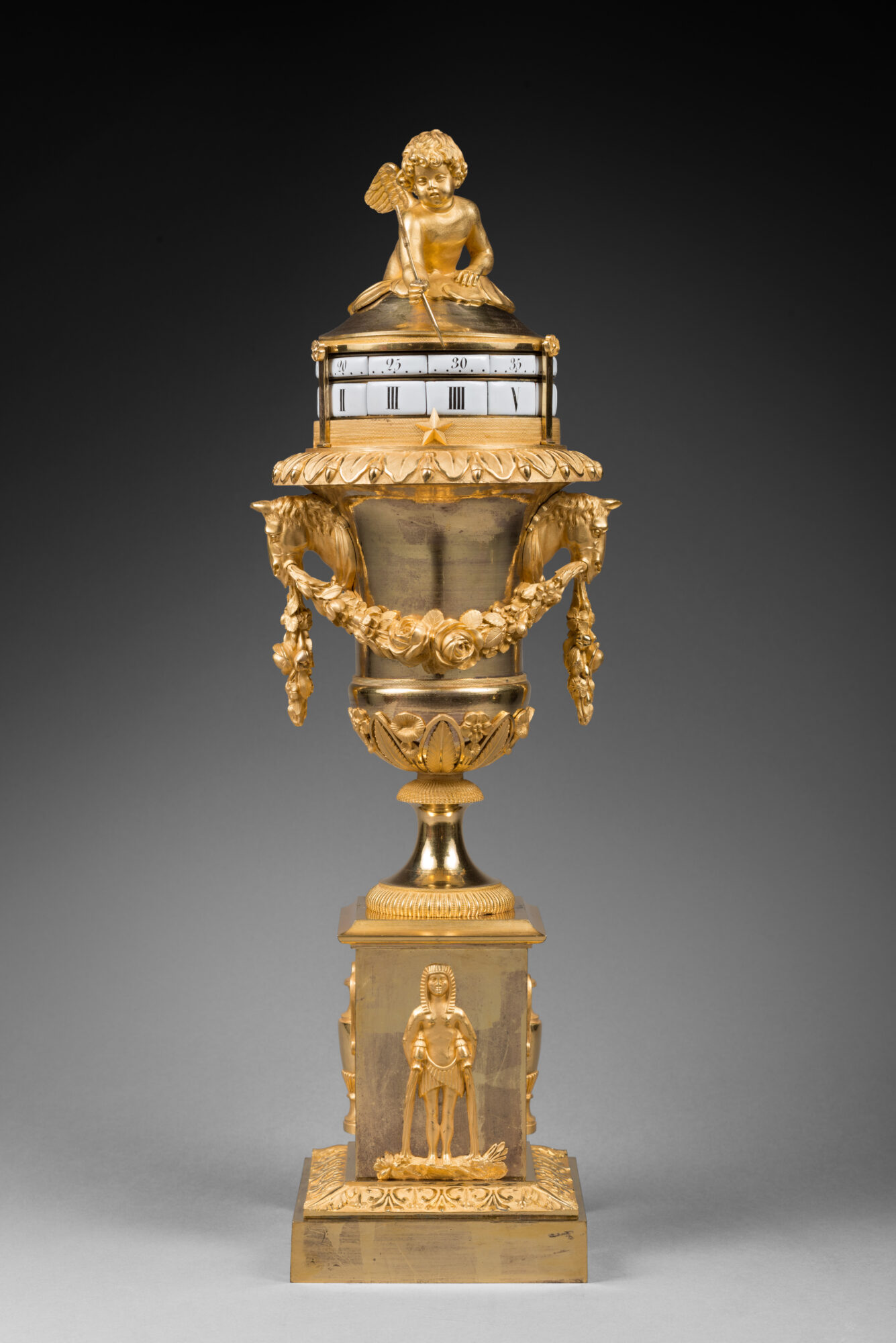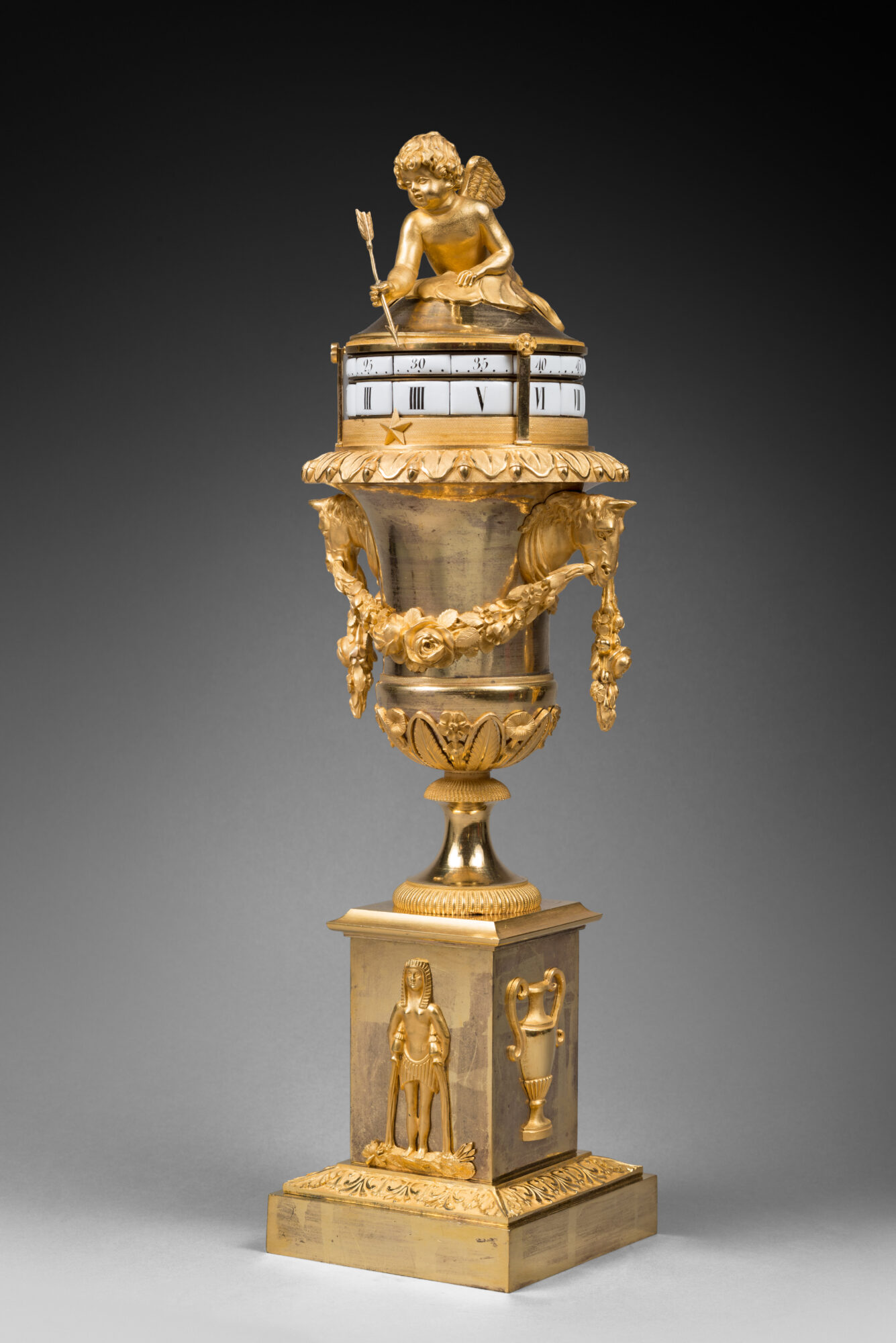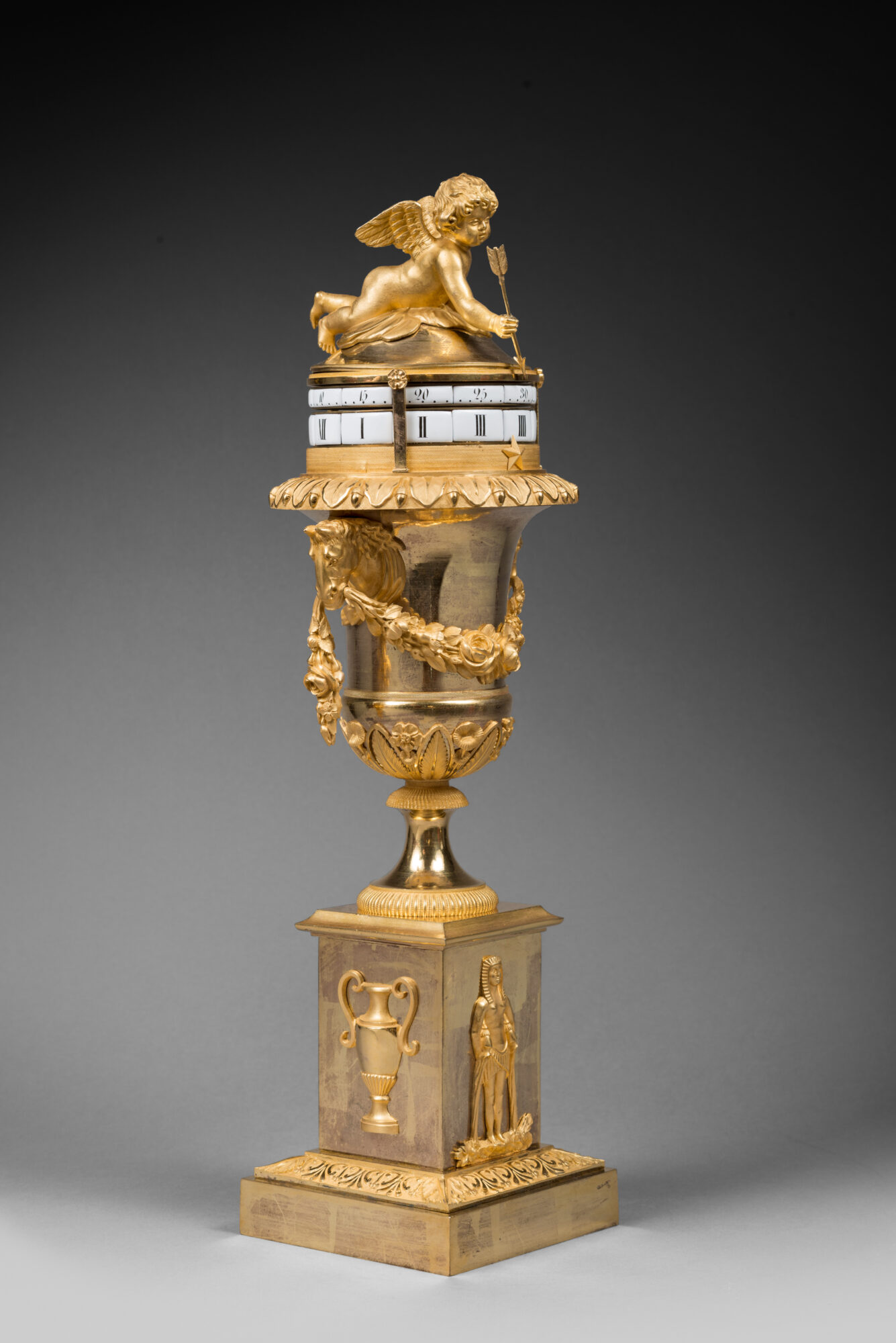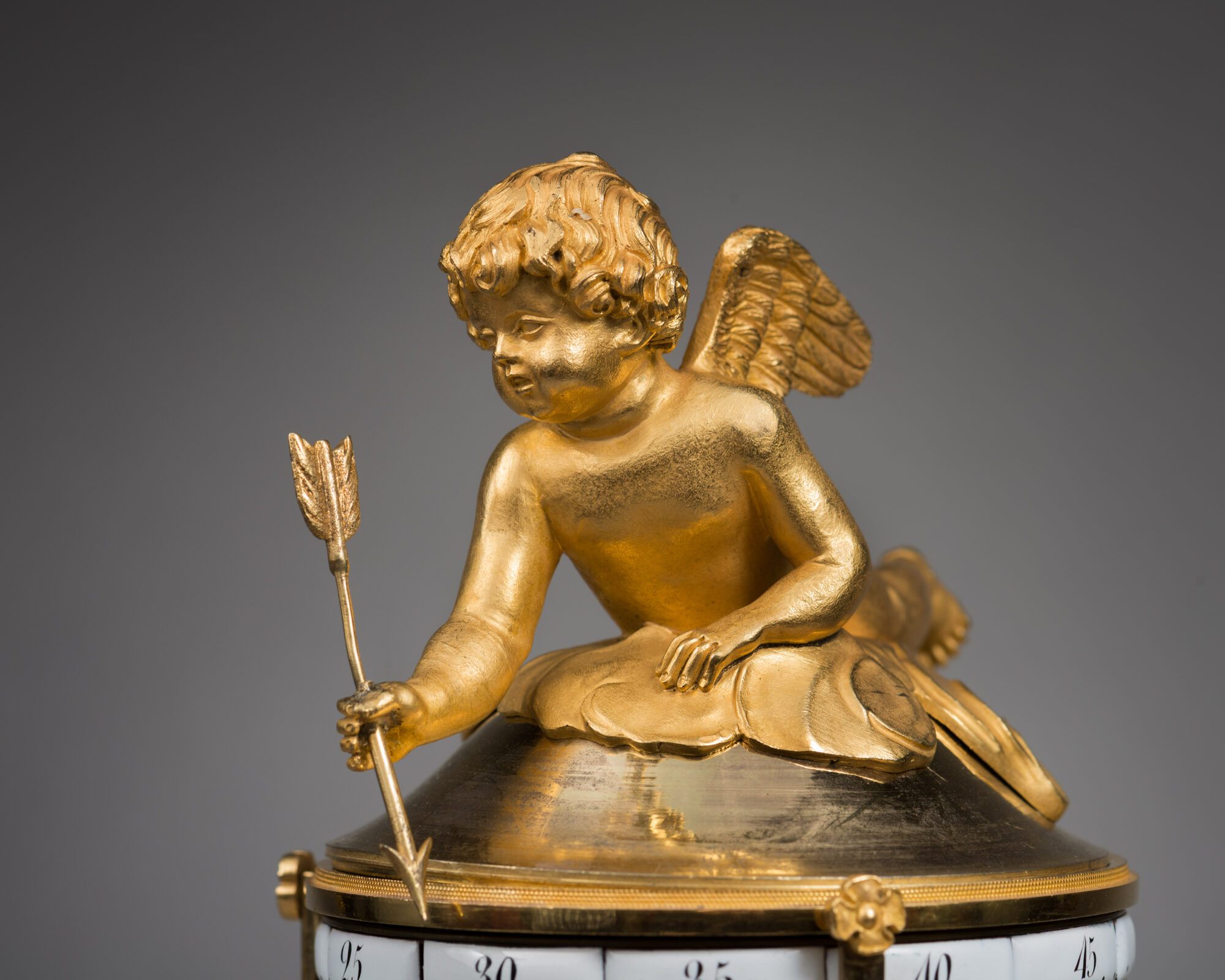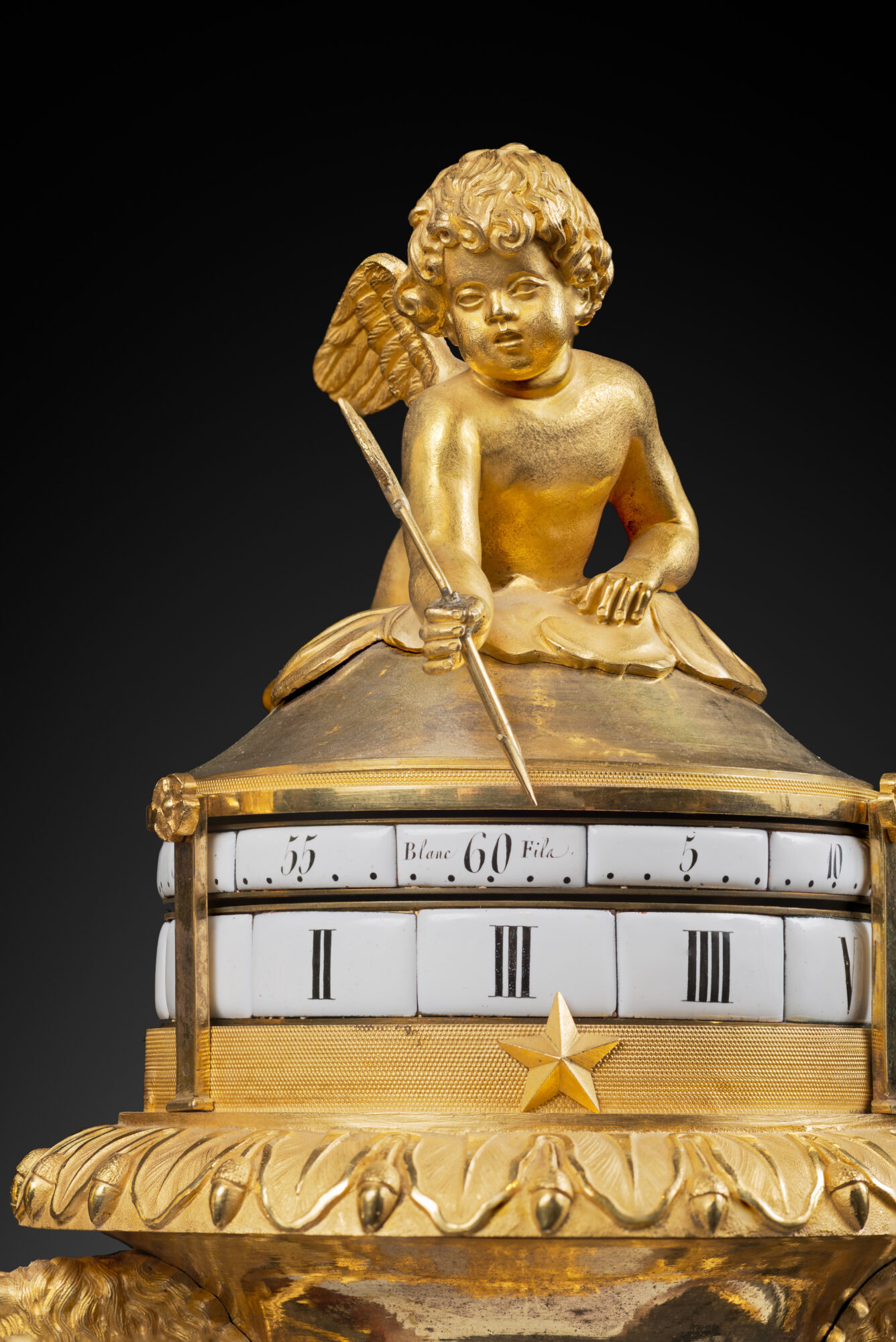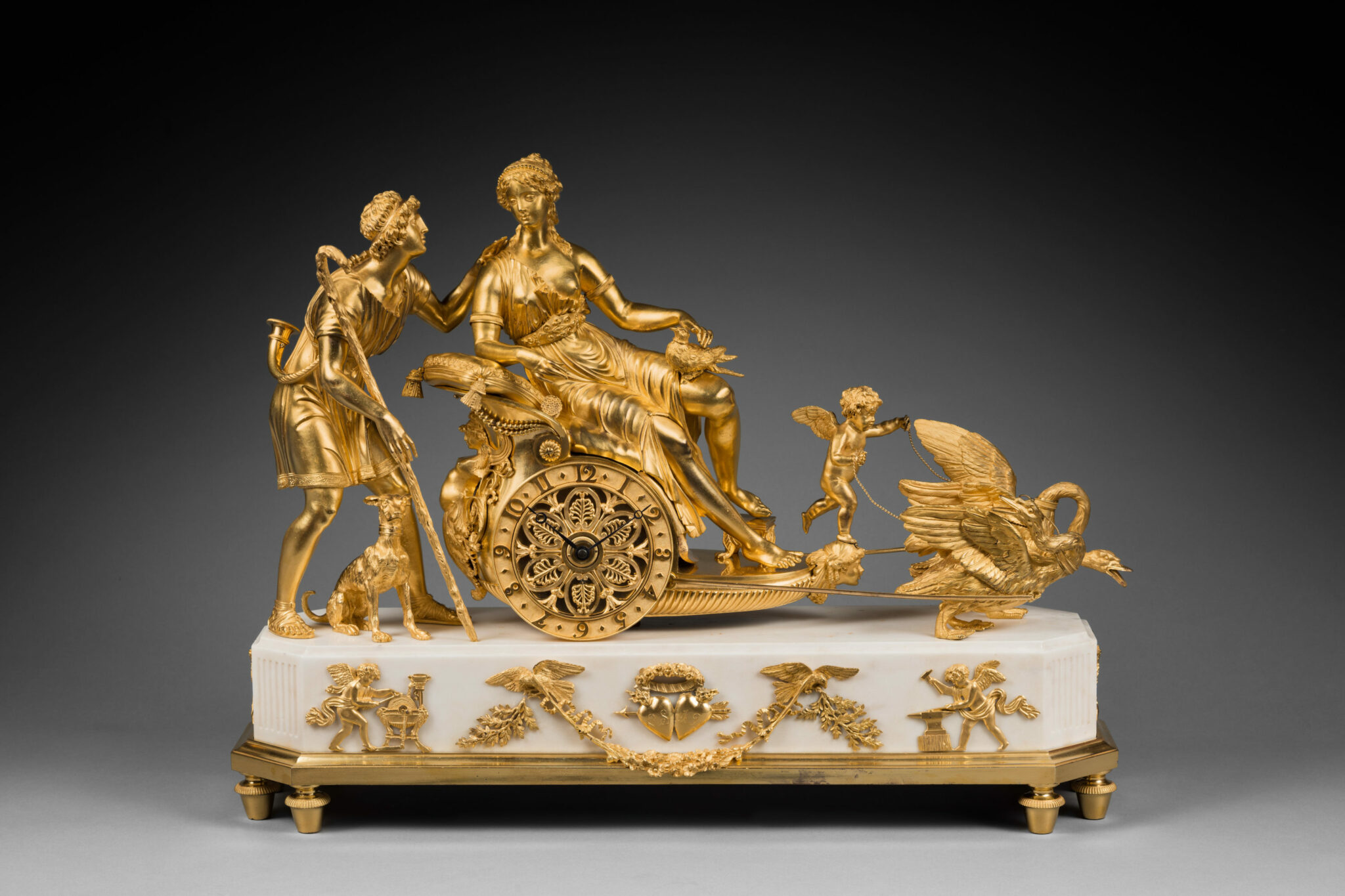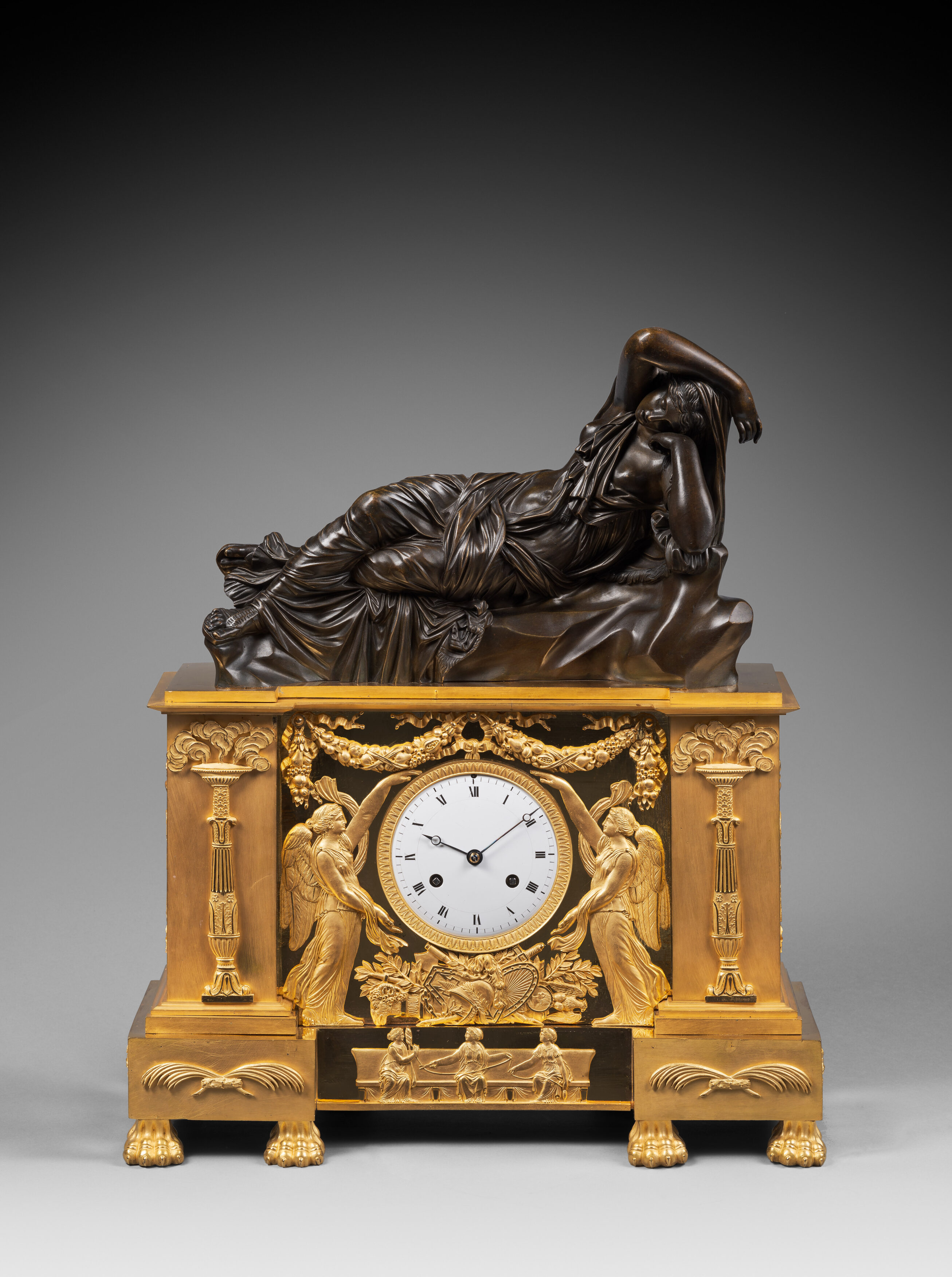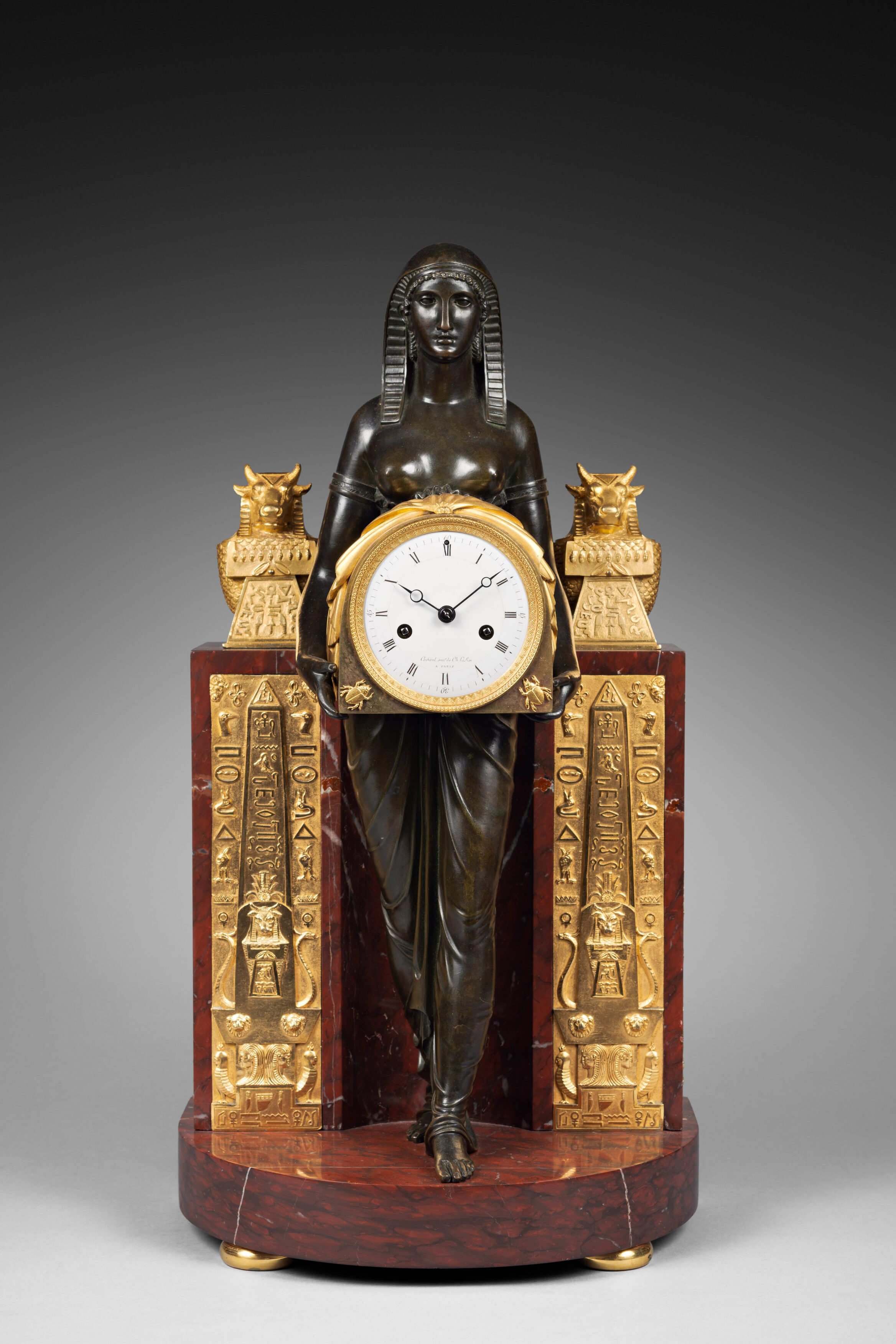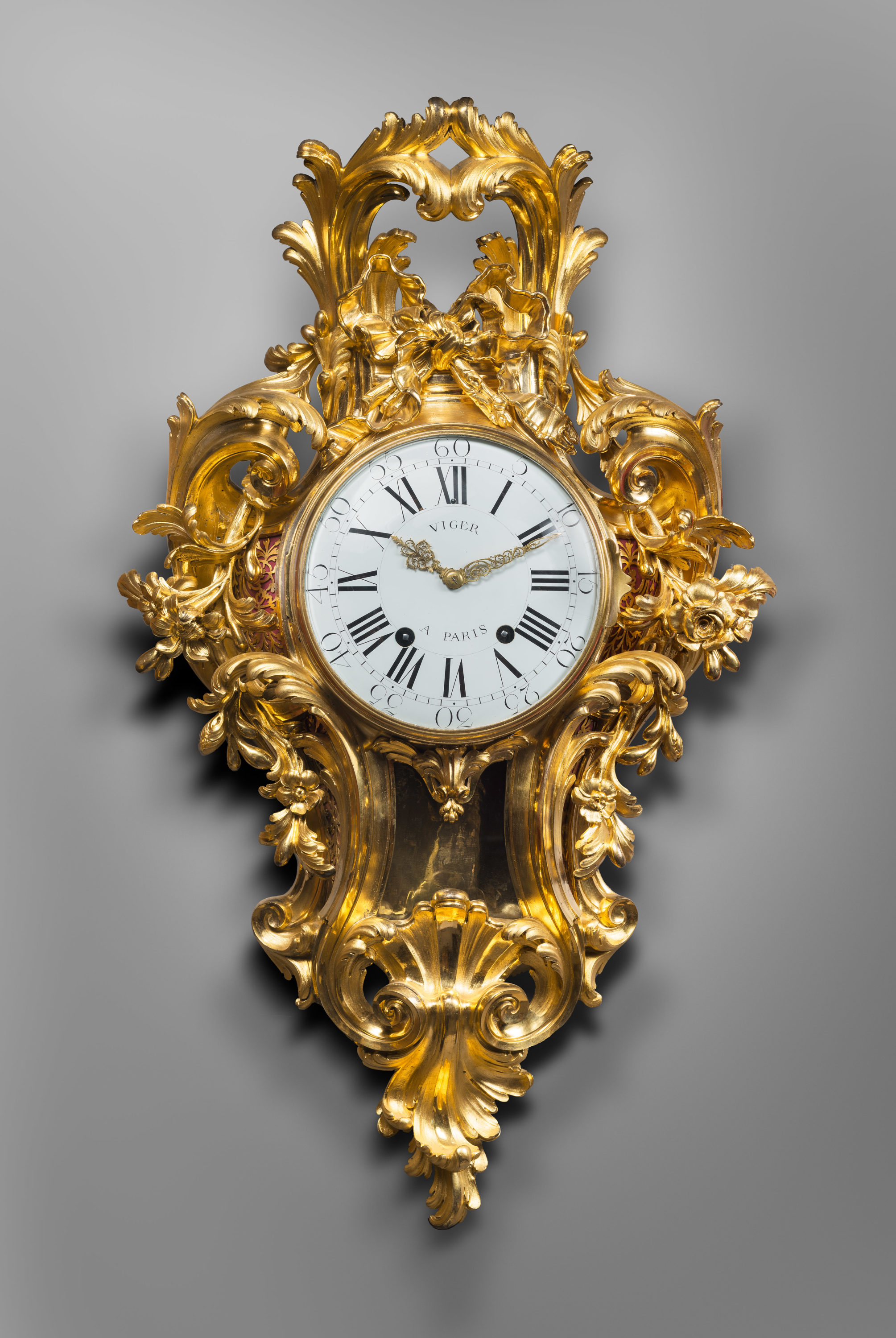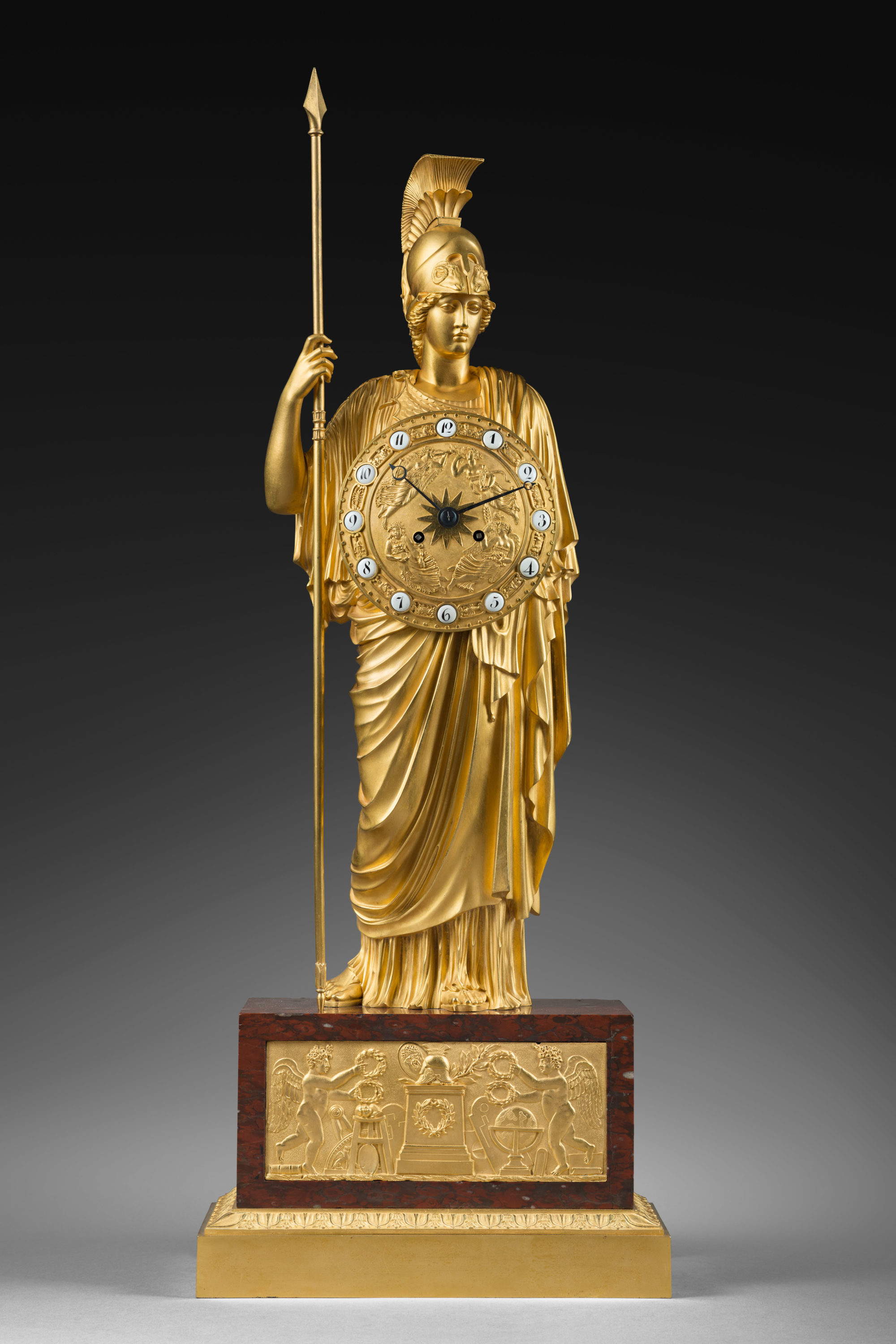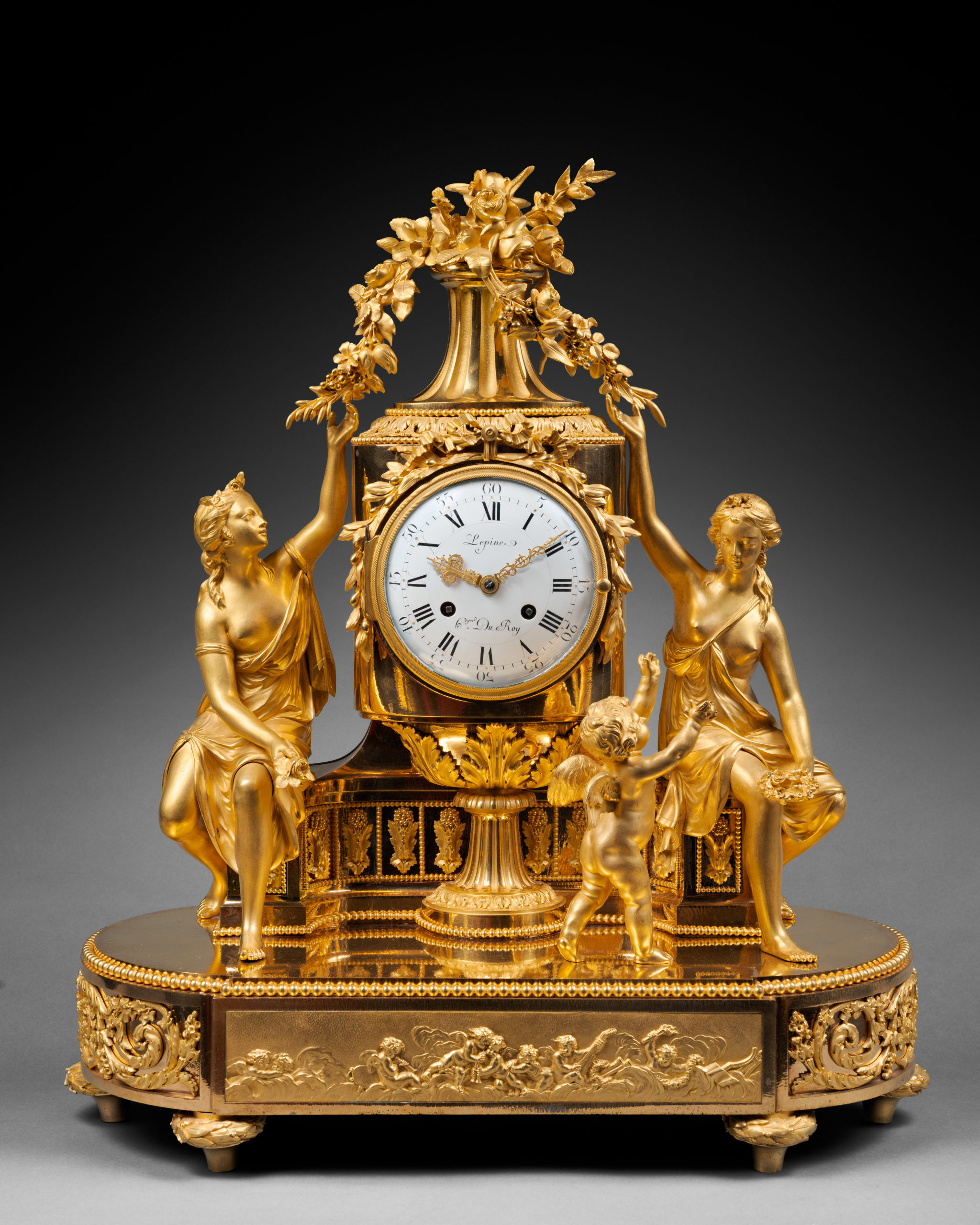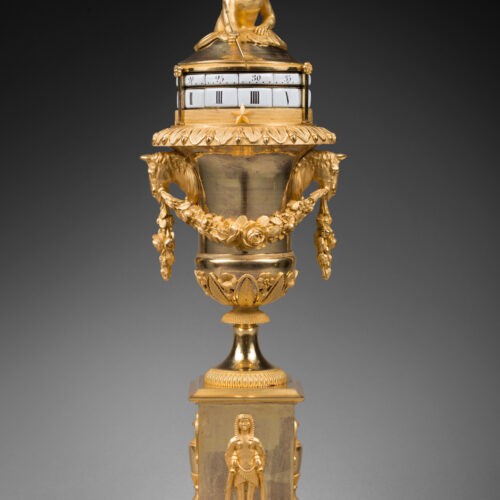Rare Matte and Burnished Gilt Bronze Mantle Clock in the form of a Medici Vase
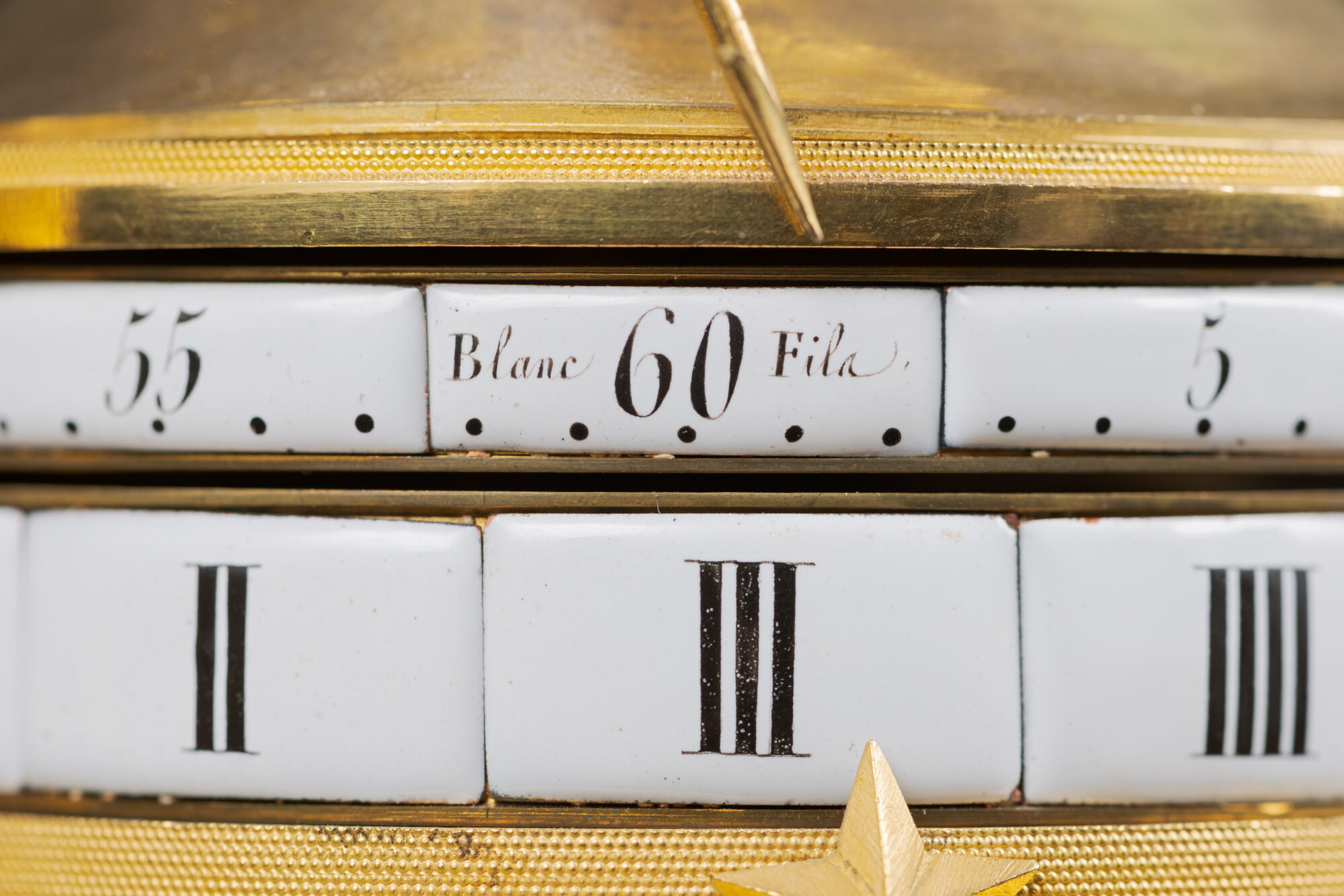
Paris, Empire period, circa 1805
The two superimposed ring dials, known as “cercles tournants”, are made up of white enamel cartouches; they indicate the Roman numeral hours and Arabic five-minute intervals. The movement is housed in a magnificent finely chased gilt bronze case in the form of a Medici vase. The plain belly of the vase is adorned with a garland of roses that is suspended from the mouths of two magnificently chased horses, whose heads form the handles. The lower portion of the vase is adorned with stylized leaves and flowers; the rounded lip is decorated with a frieze of alternating leaves and acorns set against a matted ground. The vase rests on a spreading foot that is embellished with gadrooning and engine turning. Beneath the dials, a star set on an engine turned band indicates the hours on the lower ring dial. The clock is surmounted by a putto lying on clouds and holding an arrow whose tip indicates the minutes on the upper ring dial. The clock stands on a tall rectangular plinth whose façade is adorned with the figure of an Egyptian wearing a Nemes headdress who is pouring liquid from amphoras; on the sides there are amphoras with double curved handles, decorated with gadrooning. The molded quadrangular base is decorated with a frieze of alternating stylized palmettes and stems.
Discover our entire collection of antique mantel clocks for sale online or at the gallery.
La Pendulerie is the specialist in fine and rare antique clocks, based in Paris.
Around the middle of the 18th century, motifs inspired by antiquity entered the decorative vocabulary of the French decorative arts, at the same time as a new type of clock was emerging. In these clocks, known as “cercles tournants” clocks, the usual round dials were replaced by revolving ring dials with enamel cartouches. This new style led bronziers to create novel compositions that were often housed in vases of various types, especially baluster and Medici vases. Several decades later, during the Consulate and the Empire periods, bronze casters continued to produce clocks of this type, whose design and composition they mastered perfectly. The present clock, made within this particular context, may be considered one of the most unusual and successful of those models. We should note that a pair of candlesticks with horse-head handles was formerly in the Flensburg collection (sold Bruun Rasmussen, October 29-31, 1997, lot 70). An identical clock whose movement was signed “Leroy Horloger de Madame”, was offered on the international art market in July 2001; it is now in a private collection.
